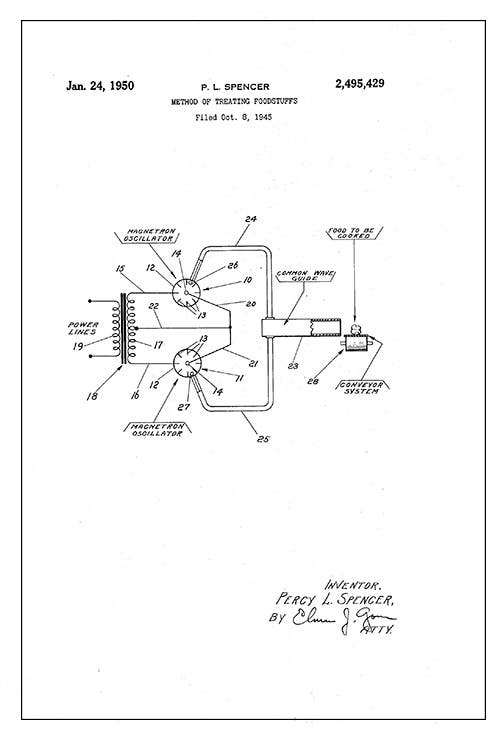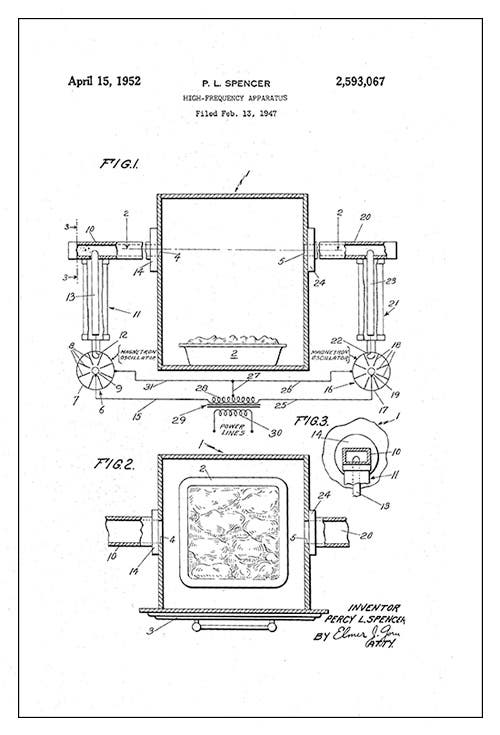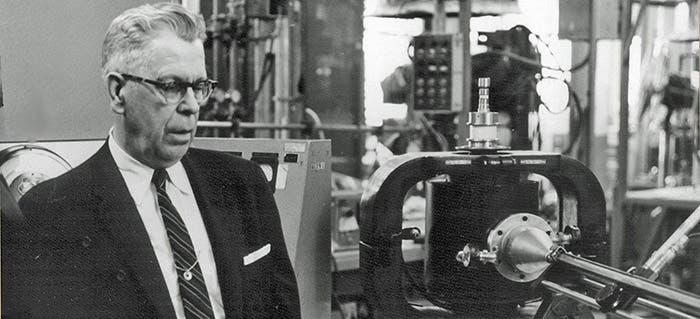Scientist of the Day - Percy Spencer
Percy LeBaron Spencer, an American electrical engineer and inventor, was born July 9, 1894. We call him an electrical engineer because of his achievements, not his training, for Spencer had no formal education at all, dropping out of grammar school when just a boy to support his family. But he clearly had both intelligence and drive, for he taught himself the rudiments of electricity to improve his job at a paper mill, and he seems to have kept on learning for the rest of his life. When he joined the Navy, he learned about radio, and when he found he needed to have more math skills and know something about physics and chemistry, he taught himself those sciences all well, all by reading textbooks.
By the last 1930s, Spencer was working at Raytheon Manufacturing Company, where he was now a specialist in power tube technology. When Raytheon was awarded a contract from the Rad Lab at M.I.T. in 1939 to develop radar, Spencer was put in charge. At the heart of radar technology was the magnetron, a tube with cavities that generated microwaves. The production of magnetrons was an expensive and time-consuming series of steps, until Spencer figured out a way to streamline the process, enabling Raytheon to manufacture thousands of magnetrons a day, every one of which was needed for the war effort.
Spencer is best known for an accidental discovery, and what he did with it. By his own account, he was standing near an operating magnetron with a candy bar in his pocket, when he noticed that the candy had melted. Curious, he put other objects in the path of the microwaves, and discovered that popcorn kernels popped, and eggs exploded. This gave him the idea for a microwave cooker. He applied for his first patent on Oct. 8, 1945, assigning the rights to Raytheon as was required by the terms of his employment. We see from the patent illustration (second image) that what he had in mind at first was not exactly a microwave oven, but rather a stream of microwaves that would cook food as it moved by on a conveyor belt.
But it didn't take Spencer long to realize that confining the microwaves to an enclosed space for cooking would be an improvement, and a second patent of Feb. 13, 1947, shows a clearly recognizable microwave oven. Raytheon was soon manufacturing the first commercial microwave ovens, which were large and ungainly, the size of refrigerators, but with the same cooking space as a modern oven. But Spencer lived long enough to see counter-top microwave ovens go into production, at prices that families could afford. He was eventually awarded a PhD by the University of Massachusetts, an honorary degree, but one that he fully earned by decades of self-education.
Dr. William B. Ashworth, Jr., Consultant for the History of Science, Linda Hall Library and Associate Professor, Department of History, University of Missouri-Kansas City. Comments or corrections are welcome; please direct to ashworthw@umkc.edu.









